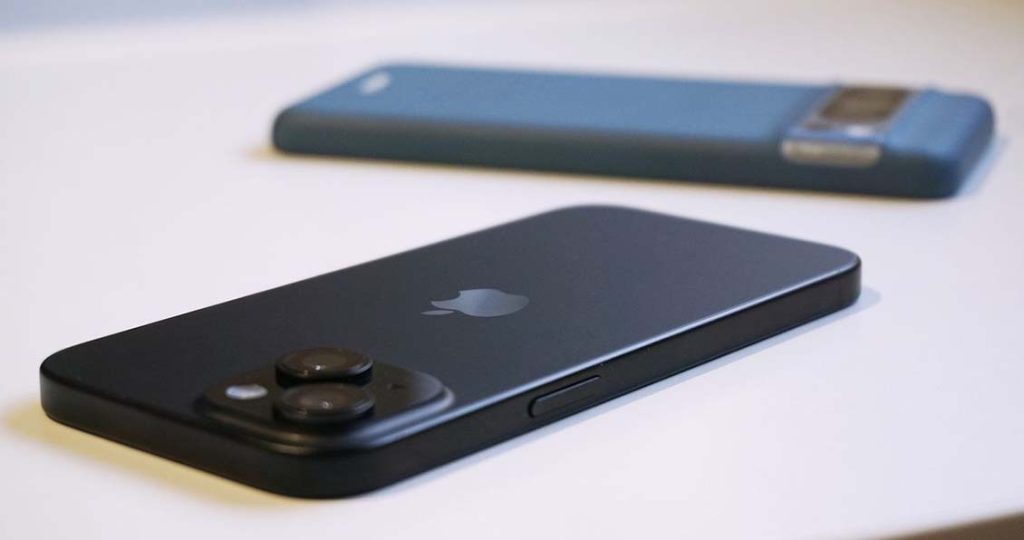I’m thrilled to delve into the intricacies of the latest iPhone 15 and compare it with some of the top Android flagships on the market. In this comprehensive analysis, we’ll explore various aspects of both platforms, including design, performance, camera capabilities, software features, and more.
Design and Build Quality:
The iPhone 15 continues Apple’s tradition of sleek and premium design aesthetics. With its ceramic glass back and aerospace-grade aluminum frame, it exudes elegance and durability. The device feels substantial in hand, and the attention to detail is evident in every aspect of its construction.
Android flagships, on the other hand, offer a wide range of design choices, from minimalist to bold and adventurous. Manufacturers like Samsung, Google, and OnePlus have mastered the art of blending glass and metal to create stunning devices that rival Apple’s offerings in terms of build quality.
Performance:

When it comes to performance, the iPhone 15 sets the bar high with its powerful A17 Bionic chip. Built on a 5-nanometer process, the A17 chip delivers blazing-fast speeds and energy efficiency, ensuring smooth multitasking, gaming, and productivity tasks.
Android flagships, powered by Qualcomm’s Snapdragon processors or custom-designed chips like Samsung’s Exynos, offer comparable performance levels. Whether you’re launching apps, editing photos, or streaming videos, these devices provide snappy responsiveness and seamless user experiences.
Camera Capabilities:
The iPhone 15 boasts an advanced triple-camera system, comprising wide, ultra-wide, and telephoto lenses. With features like Deep Fusion, Smart HDR, and Night mode, it captures stunning photos in any lighting condition. The addition of ProRAW and ProRes video recording elevates the device’s photography and videography capabilities to new heights.
Android flagships, equipped with sophisticated camera setups and cutting-edge imaging algorithms, offer similar versatility and performance. From pixel-packed sensors and optical zoom capabilities to AI-driven scene optimization and manual controls, these devices cater to photography enthusiasts and professionals alike.
Software Features:
iOS 16, the operating system powering the iPhone 15, introduces a plethora of new features and enhancements. From redesigned widgets and enhanced privacy controls to improved system performance and stability, it provides a polished and intuitive user experience. Apple’s ecosystem integration, including seamless continuity features like Handoff and AirDrop, further enhances the overall user experience.
Android flagships run on various flavors of the Android operating system, each customized by manufacturers with their own unique features and enhancements. From Samsung’s One UI to Google’s Pixel Experience, these software skins offer diverse user experiences tailored to different preferences and use cases. Additionally, Android’s open-source nature allows for greater customization and flexibility, empowering users to personalize their devices to their heart’s content.
Battery Life and Charging:
The iPhone 15 delivers impressive battery life thanks to its optimized hardware and software integration. With all-day battery life under normal usage conditions and fast charging support, it ensures users stay connected and productive throughout the day.
Android flagships also offer competitive battery life and charging capabilities, with manufacturers incorporating large battery capacities and fast-charging technologies into their devices. Whether you’re a heavy user or a casual user, these devices provide reliable battery performance to keep up with your busy lifestyle.
Ecosystem and Integration:

One of the iPhone 15’s biggest strengths lies in its seamless integration with the broader Apple ecosystem. From iCloud synchronization and Apple Music streaming to HomeKit smart home control and Apple Pay transactions, it offers a cohesive and interconnected user experience across all Apple devices.
Android flagships, while not as tightly integrated with a single ecosystem, offer compatibility with a wide range of services and platforms. Whether you’re using Google services like Gmail, Google Drive, and Google Photos or third-party apps and services, these devices provide flexibility and choice in how you manage your digital life.
Popular Applications:
For iPhone users, popular applications like FaceTime, iMessage, and Apple Maps are deeply integrated into the iOS ecosystem. FaceTime allows seamless video calls between Apple devices, while iMessage offers encrypted messaging and multimedia sharing. Apple Maps provides detailed navigation and transit information, making it a preferred choice for many iPhone users.
On the Android side, popular applications like Google Maps, Gmail, and YouTube dominate the landscape. Google Maps offers comprehensive mapping and navigation features, including real-time traffic updates and offline maps. Gmail provides a powerful email client with advanced search and organization capabilities, while YouTube offers a vast library of videos for entertainment and education.
Both the iPhone 15 and Android flagships offer exceptional features and capabilities that cater to a wide range of users. Whether you prefer the seamless integration of Apple’s ecosystem or the customization options and versatility of Android, there’s no denying the appeal of these flagship devices.
Ultimately, the choice between iPhone 15 and Android flagships comes down to personal preference, ecosystem loyalty, and specific use-case requirements. Whichever platform you choose, you can rest assured knowing that you’re getting a premium smartphone experience tailored to your needs.
If you are interested in the difference between iPad vs. Android Tablets, you can click here.

